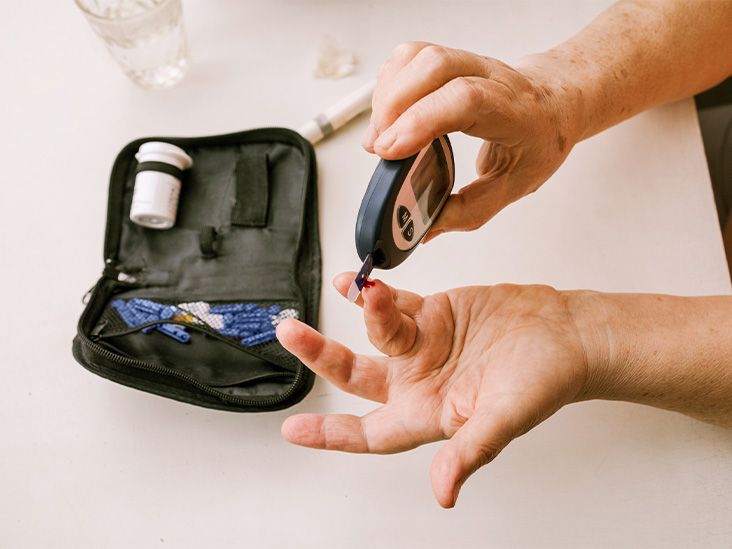Pain relief and other side effects of morphine usually wear off within 4–6 hours. It may still be present in the urine for 12–36 hours and in the blood for 1.5–4.5 hours.
Morphine is a potent opioid drug that can relieve pain, induce sleepiness, and, in some people, cause feelings of euphoria. It is potentially very addictive.
In the United States,
People trying to quit using morphine may find that withdrawal symptoms become worse as the drug leaves their system.
Breastfeeding mothers may want to know how long the drug remains in their breast milk, while people subjected to workplace drug screenings may worry about positive drug tests.
How long it takes for morphine to leave a person’s body depends on numerous factors, including how much they take, metabolism, age, body size, and general health. Read on to learn more.

Image credit: Wikimedia Commons 2009
The effects of morphine include:
- pain relief
- sleepiness
- changes in mood and behavior
- feelings of euphoria or wellness
The side effects of morphine include:
- slowed breathing
- changes in the heart rate
- low blood pressure
- stomach pain, including diarrhea, nausea, and vomiting
Some people may also experience side effects relating to the way they take morphine. For example, morphine injections may cause pain or irritation at the injection site.
One of the most common side effects of morphine is tolerance. As a person’s tolerance of the drug builds, they need more morphine to get the same results they once got with less.
If people continue using morphine, it can lead to dependence and addiction.
Those who develop an addiction to morphine may experience intense cravings between doses, or feel like they need morphine to be “normal.”
The timeline of morphine effects depends on several factors, including how a person takes the drug, how much of it they take, and whether they have developed a tolerance to it.
Injectable morphine relieves pain within 5–20 minutes. Pain relief peaks around 60 minutes, and lasts for a total of 3–4 hours. The other effects of the drug generally follow a similar line.
Oral morphine takes slightly longer to work, but pain relief peaks by about 60 minutes after taking the drug. Pain relief and other side effects usually wear off within 4–6 hours.
The metabolites of morphine remain in the body even after a person no longer feels the drug’s effects.
People undergoing morphine drug testing should ask about the sensitivity of the test. The more sensitive the test is, the more likely it is to detect morphine. Highly sensitive tests may also produce false positives.
Blood
Blood tests for morphine show a negative result more quickly than other tests. This is because morphine reaches peak blood concentrations within 1 hour or so of use.
The body quickly metabolizes the drug, and the half-life, or the time it takes for the body to metabolize half of the dose, is just 1.5–4.5 hours.
The half-life length of morphine means it will usually exit the blood within several hours, and a blood test will almost always be negative within a day or two.
Urine
Morphine exits the urine relatively quickly. Depending on the size of the last dose, a person’s metabolism, how much water they consume, and similar factors, a urine sample is usually negative within
Urine morphine samples test for all opioids and are very sensitive. False positives are common.
Breast milk
Morphine can enter breast milk, but the quantity of the drug and the length of time it remains there depends on the dosage and other factors.
An analysis of lactating mothers who received morphine in an epidural found that concentrations of the drug peaked
Another study of women who received morphine in their epidurals assessed breast milk levels of the drug at various intervals. Morphine concentrations were highest
Women who may be taking morphine while breastfeeding should talk to their doctor about the safety of using this drug while breastfeeding.
Hair
Morphine remains in the hair longest. As the hair grows, new hair growth may not have evidence of morphine use, but older hair may show signs of morphine use for an extended time.
A 2016 study found that morphine was still detectable in hair 90 days after a person stopped using it.
The amount of time it takes to withdraw from morphine depends on several factors, including:
- whether a person stops using immediately or gradually
- how frequently a person uses morphine
- the size of the last morphine dose
Withdrawal symptoms usually begin around the time a person would take their next morphine dose and become steadily worse over several hours.
The symptoms of withdrawal tend to peak within a few days. After this point, physical withdrawal symptoms may improve, but psychological cravings tend to last much longer, sometimes for months or years.
Help with addiction and withdrawal is available from the Substance Abuse and Mental Health Services Administration (SAMHSA).
Anyone can call the SAMHSA National Helpline on 1-800-662-HELP-(4357) at any time. The line is confidential and free, 24/7, 365 days of the year.
The length of time morphine stays in a person’s system varies and also depends on how they measure its presence.
Even when morphine completely exits the body, a person may feel the after effects of morphine use, including cravings and withdrawal, for several days.
People with concerns about morphine levels in their body, are considering quitting morphine, or breastfeeding a baby or young child should consult a doctor for guidance.


